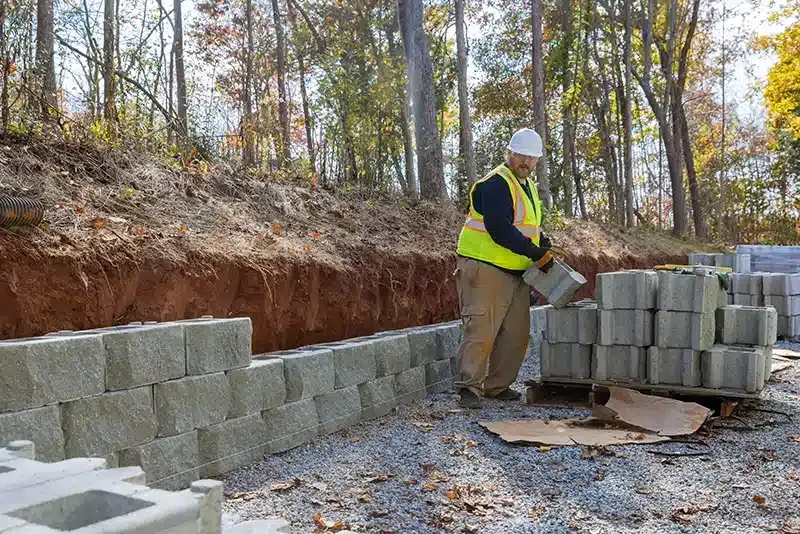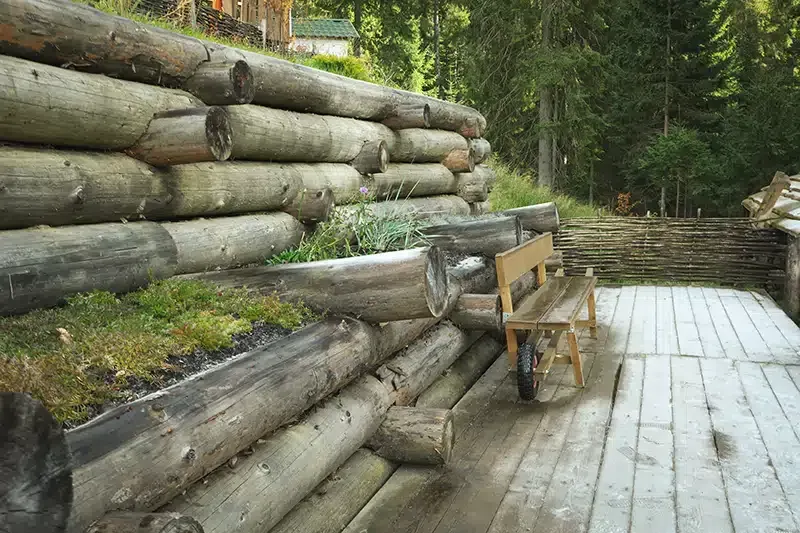What Is the Science Behind How Retaining Walls Work?
What Is the Science Behind How Retaining Walls Work?

Understanding the science behind retaining walls is crucial. Forces like gravity and hydrostatic pressure can impact their stability.
Different designs and materials affect how these structures function. As you explore the intricacies of soil mechanics and drainage strategies, you'll uncover the complexities that ensure these walls hold strong against nature's pressures.
How do these factors intertwine to create practical solutions?
The Forces at Play: Gravity and Hydrostatic Pressure
Understanding the physical forces acting on a retaining wall is essential for proper design and long-term performance.
The Role of Gravity
Gravity constantly pulls soil downward, exerting lateral pressure on the wall.
- Soil weight increases with wall height.
- Sloped landscapes create added pressure.
- Overloaded backfill can lead to wall movement or tilting.
Impact of Hydrostatic Pressure
Water accumulation behind the wall adds substantial force beyond the soil's weight.
- Poor drainage increases hydrostatic pressure.
- Wet soil weighs more and exerts extra force.
- Seasonal rainfall or snowmelt can overwhelm unprepared walls.
Why It Matters
Both forces must be addressed in the design and engineering process.
- Reinforcement, proper backfill, and drainage systems help resist pressure.
- Failure to account for these forces can lead to cracking, leaning, or collapse.
- A professionally engineered wall is built to manage these dynamic loads.
Acknowledging gravity and hydrostatic pressure allows for more innovative construction. It reduces the risk of failure and prolongs the wall’s lifespan.
Types of Retaining Walls and Their Designs
Selecting the right retaining wall design depends on your site's soil, slope, and structural needs.
Gravity Retaining Walls
These walls resist soil pressure through their weight.
- Ideal for short walls and simple installations.
- Made from stone, concrete, or masonry blocks.
- Require a broad base for stability.
Cantilever Retaining Walls
Cantilever walls use a reinforced base and stem for added strength.
- Constructed from poured concrete or precast units.
- More efficient for taller walls than gravity types.
- Use less material by leveraging design mechanics.
Anchored Retaining Walls
These anchored retaining walls offer added support through tensioned anchors.
- Anchors extend deep into the soil or rock.
- Great for sites with high loads or limited space.
- Useful for both tall and thin wall designs.
Sheet Pile and Gabion Walls
Engineered for specific site conditions and environmental needs.
- Sheet piles are driven into soft soils.
- Gabion walls use mesh cages filled with rock.
- Gabions offer permeability and a natural look.
Choosing the right design ensures safety, longevity, and optimal performance for your project.
Soil Mechanics and Material Properties in Retaining Wall Functionality
An effective retaining wall begins with a solid understanding of soil behavior and material selection.
Soil Characteristics and Their Impact
Different soils exert different pressures and respond uniquely to moisture.
- Cohesive soils (like clay) resist erosion but expand/shrink with water changes.
- Granular soils (like sand or gravel) offer good drainage but lower cohesion.
- Moisture content influences soil weight and lateral pressure.
Understanding these variables helps determine wall height, reinforcement, and drainage needs.
Choosing the Right Wall Materials
Wall materials must match the site conditions and desired longevity.
- Concrete offers excellent strength and minimal maintenance.
- Stone provides durability and a natural appearance.
- Timber is cost-effective but prone to decay without treatment.
- Reinforcements like geogrid or steel improve load resistance.
Selecting the right combination of soil preparation and wall materials leads to lasting structural performance.
Considering soil mechanics and material properties isn’t optional—it’s essential. Overlooking these factors can lead to premature wall failure and costly repairs.
Proper planning ensures structural stability, drainage performance, and long-term safety. A well-informed approach protects your investment and supports the commercial landscape for years.


